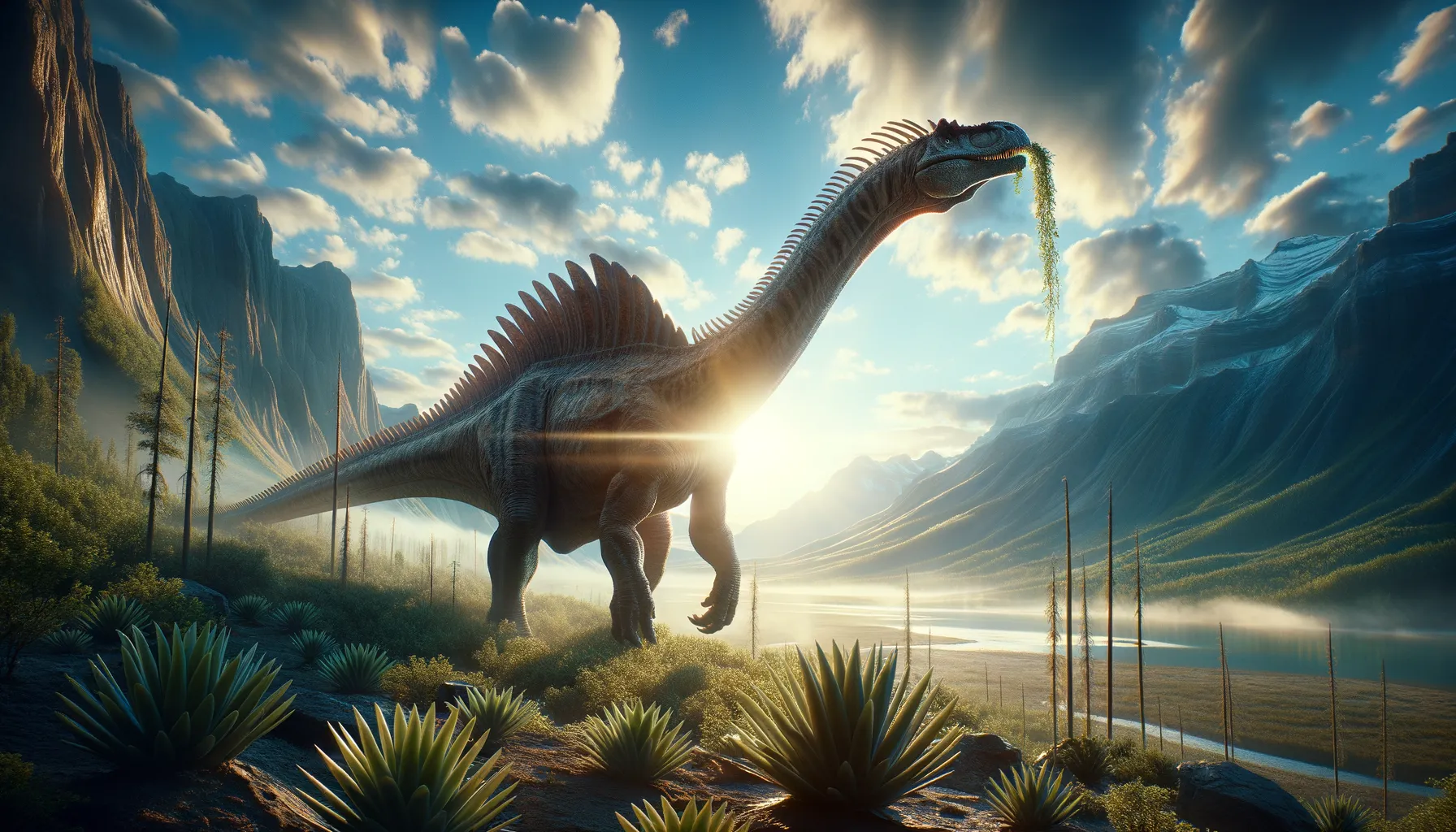
Sibirotitan
The giant of Siberia's Cretaceous wilderness.
Period
Cretaceous
Length
Around 30 meters long from head to tail.
Height
Could reach up to 12 meters tall at the head.
Weight
Estimated to weigh around 50 tons.
Sibirotitan was a massive herbivorous dinosaur from the Cretaceous period, characterized by its impressive size and elongated neck. Found in present-day Siberia, this giant roamed vast landscapes, likely reaching high vegetation. Its fossils have provided valuable insights into the distribution of sauropods in northern regions during the Cretaceous. Thanks to its unique structure, Sibirotitan played a significant role in our understanding of dinosaur evolution and adaptation to different environments.
Diet
Sibirotitan was an herbivore, feasting primarily on high-growing plants. Its long neck allowed it to reach vegetation others couldn't, enjoying various leaves and branches.
Hunting
As a herbivore, Sibirotitan did not hunt. Instead, it relied on plants for sustenance, skillfully using its height advantage to access food.
Environmental challenges
Living in Siberia, Sibirotitan faced harsh temperatures and limited food during colder periods. Its size likely helped regulate body temperature, allowing survival in varied conditions. The changing habitats required adaptability, as vegetation cycles shifted with the climate.
Speed
Likely slow-moving due to its massive size.
Lifespan
Estimated to live several decades like other sauropods.
First discovery
Discovered in the Transbaikal region of Siberia in 2008.
Fun Facts
- Sibirotitan was a massive dinosaur that roamed the land around 100 million years ago during the Early Cretaceous period.
- Its name means 'Siberian giant' because its fossils were discovered in Siberia, Russia.
- Sibirotitan was part of a group of dinosaurs known as sauropods, which were famous for their enormous size and long necks.
- This dinosaur likely grew to about 36 feet long, making it a relatively large member of its family.
- Sibirotitan's long neck helped it reach high vegetation, allowing it to feed on leaves from tall trees.
- Despite its size, Sibirotitan is believed to have been a gentle giant, probably moving in herds for protection.
- The discovery of Sibirotitan has provided valuable insights into the evolution and spread of sauropods across ancient Earth.
Growth and Development
Sibirotitan experienced rapid growth in its youth to reach towering heights, crucial for survival. This swift development came with energy demands, necessitating a rich supply of food. Over time, its growth rate slowed as it approached full size, focusing more on sustainment.
Habitat
Sibirotitan inhabited vast, open plains and forests, thriving in the temperate climate of ancient Siberia. These regions provided abundant food sources, essential for such a large creature. It likely roamed near water bodies, necessary for hydration and vegetation growth.
Interaction with other species
As a large sauropod, Sibirotitan coexisted with other herbivorous dinosaurs, sharing feeding grounds. Its size discouraged most predators, but it might have interacted with smaller species seeking shade or protection. These dynamics helped shape the ecosystem's balance.
Natural lifespan
Sibirotitan likely lived for around 70-80 years in the wild.
Reproduction
Sibirotitan, like other sauropods, likely laid eggs in nests built in secluded areas. These nests were critical for protecting vulnerable young from predators. Parental care, if any, could have involved guarding the nesting site.
Social behaviour
Sibirotitan may have traveled in herds, providing mutual protection from predators. This social structure facilitated cooperative feeding strategies, maximizing their access to resources. Interaction within the herd was likely crucial for survival.
Fossil locations
Fossil remains of Sibirotitan have been primarily found in the Transbaikal region of Siberia. These discoveries contribute greatly to understanding the distribution of sauropods in northern territories. Fossil records indicate its presence during the late Early Cretaceous period.
